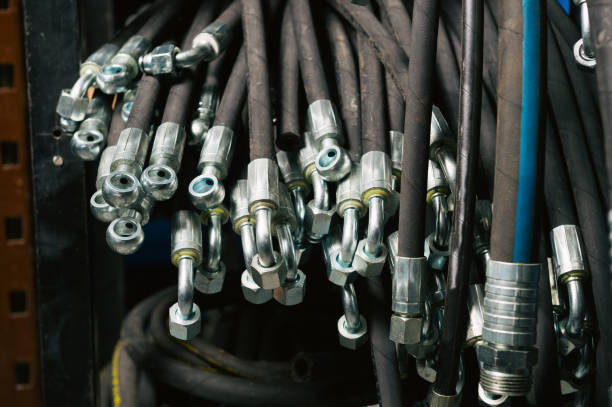Spotting Hydraulic Hose Leaks: A Preventive Guide
Table of Contents
- Understanding Hydraulic Hose Leaks
- Common Signs of a Leak
- What Causes Hydraulic Hose Leaks?
- Preventive Maintenance Tips
- How to Perform a Leak Test
- Safety Considerations
- The Cost of Ignoring a Leak
- When to Consult a Professional
Understanding Hydraulic Hose Leaks
In the world of machinery, hydraulic hoses serve as crucial conduits, channeling the fluids necessary to power diverse equipment efficiently. When these hoses develop leaks, it can lead to productivity disruptions, unforeseen machine downtime, and costly repairs. Recognizing the early signs of leaks is crucial, especially if you find yourself in need of hydraulic mobile hose repair Charlotte NC. By familiarizing yourself with how these leaks occur, you can make informed, timely actions to prevent significant disruptions and ensure operational efficiency.
Hydraulic systems are inherently intricate and dynamically pressured, which makes them susceptible to leaks. This susceptibility is amplified by a variety of factors, such as high pressure, continuous cyclic wear, and external physical damage. Therefore, an insight into the common causes of hydraulic hose leaks is instrumental in maintaining machinery health and ensuring on-site safety, facilitating smoother operations, and reducing unexpected system failures.
Common Signs of a Leak
Identifying hydraulic hose leaks early on can prevent time-consuming downtime and save substantial costs. Several tangible indicators can suggest a potential leak issue. For instance, the presence of puddles of oil underneath machinery is a red flag, hinting at possible fluid escape points. Additionally, an unexpected decline in machine performance or unusual noises during operation can signal system strain and inefficiency. Don’t overlook physical signs on hoses, such as blisters, cracks, or persistent wet patches, as they are direct pointers to leaks.
What Causes Hydraulic Hose Leaks?
Understanding the root causes of hydraulic hose leaks can empower proactive measures and extend equipment life. Improper installation is a primary culprit; a slight misalignment or inadequate securing of hoses can leave systems vulnerable to leaks. Regular wear and tear due to continuous use is also unavoidable but manageable with routine checks. External abrasion, especially in harsh working environments, can further expedite hose degradation. Ensuring correct initial installation and incorporating regular maintenance checks are vital tactics to mitigate these risks and prolong system reliability.
Preventive Maintenance Tips
- Conduct regular visual inspections to spot early signs of wear or potential damage. This proactive approach helps replace compromised hoses before they catalyze broader system issues.
- Regularly verify all connection points to ensure they are securely fastened, preventing small leaks from evolving into significant problems.
- Proactive replacement of any hose exhibiting damage or excessive wear is advisable, preserving the overall system’s efficiency and avoiding unexpected machine downtimes.
- Adopt consistent cleaning routines to maintain a contaminant-free work environment, which also aids in identifying leaks and avoiding unnecessary exposure to harsh elements or chemicals.
How to Perform a Leak Test
Integrating routine leak tests into your maintenance strategy plays a crucial role in system integrity. An accessible method is using soapy water at connection joints; the formation of air bubbles indicates a pressure breach. For a more precise analysis, employ a hand or digital pressure checker to monitor pressures within safe operational limits. These practices not only help in early leak detection but also assist in maintaining the overall system’s operational health and safety.
Safety Considerations
Safety remains the cornerstone when handling any hydraulic system. Always ensure the system is entirely depressurized before commencing inspections to avert potential injuries. Adding an extra layer of precaution entails donning appropriate safety gear such as gloves and goggles, safeguarding against fluid splashes and any unintended contact with debris. Establishing safety protocols not only protects personnel but also enhances machinery longevity through responsible handling practices.
The Cost of Ignoring a Leak
The repercussions of dismissing a hydraulic hose leak extend well beyond immediate repair needs and can escalate rapidly if left unaddressed. Avoidable leaks often contribute to diminished system efficiency, pose significant environmental hazards, and may culminate in critical system failures. The consequential financial strain further emphasizes the merit of timely intervention. Addressing leaks promptly is a safety measure and a strategic economic decision to uphold system efficacy and safeguard workplace environments.
When to Consult a Professional
If persistent leaks or complex signs challenge your efforts, it might be prudent to seek expert assistance. Calling upon seasoned professionals or a local hydraulic repair service can provide indispensable insight into diagnosing and resolving intricate issues, ensuring the longevity and optimal performance of your systems. Professionals bring a wealth of experience, dissecting problems with precision and proposing tailored solutions to align with your operational needs.




